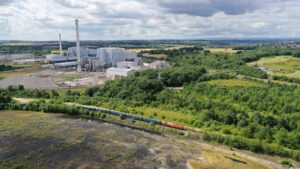One city’s response to flood prevention
The city council in Sheffield, my home city, is consulting on its flood prevention strategy. In 2007 the city was hit by intense rainfall over a number of weeks and, eventually, with the soils saturated and the rivers full, the water spilled across and through the city. It was fatal, it was devastating for businesses and some homes were very badly damaged.
In the aftermath there was significant scrutiny of the city’s flood protection in public. Experts and responsible persons gave evidence and, in time, it was clear that the city needed to invest more thought into how it should do this. Business has recognised it has a responsibility to work with the city council to achieve this.
At the time I was working as the council’s head of environmental strategy. In all the papers I prepared for councillors on climate change I made the point that there was ever greater variability, intensity and unpredictability in the future climate. Those messages are coming true now. Other cities have experienced the same issues – Newcastle, Leeds, Bristol, Hull, York.
It’s good to see that as part of the planning and development of the city, the city council is now consulting on the ‘protecting Sheffield from flooding programme’ and is consulting with stakeholders, partners, business owners and members of the public inside and outside of flood risk areas. It’s an £83m package of interventions and while the programme focuses on two major river catchments, the River Don and the Sheaf (from which Sheffield gets its name), it considers the effect and impact of the serving tributaries. Those smaller rivers include the Porter and Rivelin, which take their water from the uplands to the west of the city and which flow, generally, west-east towards the lower lying lands before heading to the coast.
The programme justifies itself on supporting economic growth but it recognises the important role rivers and water have played (and continue to play) in the city’s heritage. It’s pleasing that amenity and biodiversity are included and the short animation accompanying the consultation references this. But what a pity it’s only had six views. It’s clear to me that we’re in danger of being complacent. The memories of 2007 may be fading but the threat of flood is only getting stronger.
Pleasingly, the strategy acknowledges it needs to create water storage when rivers burst and is proposing open spaces are used to provide temporary storage in, for example, parks. This is a well tried method in other countries and all power to the city for looking at its green spaces as blue spaces too. Slowing down the flow of water through the city is essential if communities downstream are to be protected and specific flood defences on vulnerable areas of low-lying land are still going to be necessary.
The consultation has been running since the summer and I hope the response rate is higher than the YouTube views. It’s also encouraging that the city’s highway contractor, Amey are trialling state-of-the-art sensors into gullies in a trial aimed at preventing the flooding of roads. I just hope they trial them in Sheffield too.
My view is this is a step in the right direction, but also a missed opportunity. Water is central to our lives. Where it falls, how it’s stored, moved, used, disposed of and re-used is part of a cycle. I would liked to have a seen a more comprehensive water strategy developed not just with the Environment Agency, but also with Yorkshire Water, so that the future needs of the city are better understood, joined up and planned.
We now talk about ‘water sensitive cities’, ‘sponge cities’, green and blue space that recognises the importance of water as part of the health, wellbeing, economic and environmental agendas. As the climates of the future become more energised, less predictable and more intense we need to understand how we will deal not just with flood, but with drought and not for now – but for the climate we know is just round the corner.
Photo by minkymonkeymoo 
















In reply to Andy Nolan’s excellent article about Sheffield’s Flood Protection progamme, I would point out that the programme includes a pilot scheme, Three Brooks, that is being developed in partnership with Yorkshire Water. The scheme is looking to create blue urban corridors linking with new development SuDS serving social housing developments in the Manor estates of Sheffield; and retrofit SuDS redirecting storm water away from overloaded sewers and recharging the Manor’s watercourses with clean rainwater. The scheme also aims to increase biodiversity as well as provide a new sustainable transport route within the Carbrook blue corridor running parallel to the city’s outer ring road.
James Fletcher
Flood and Water Manager
Sheffield City Council